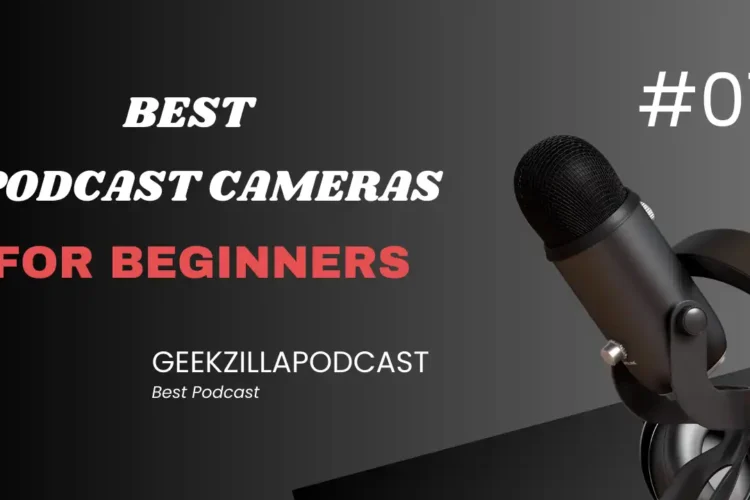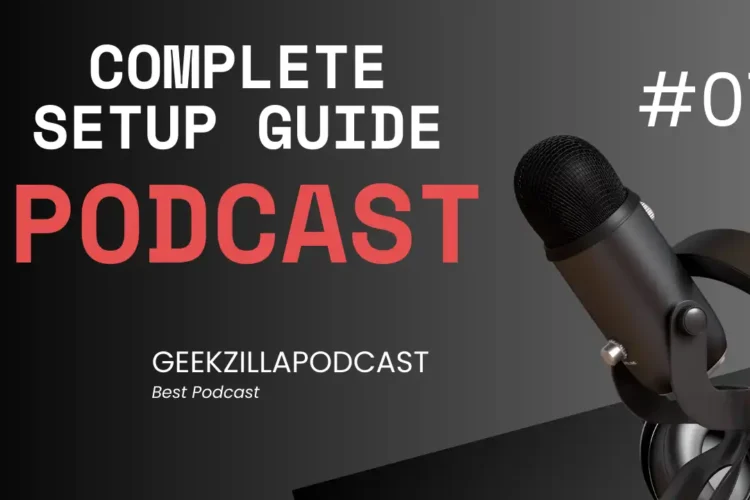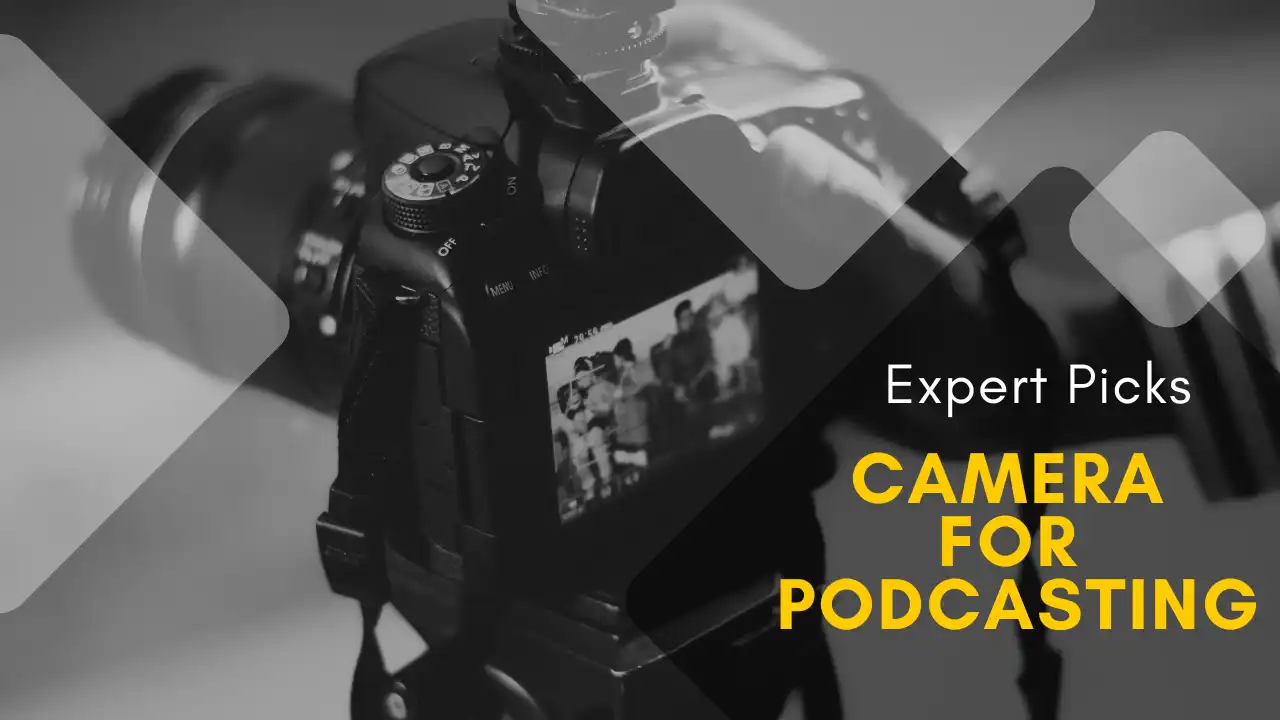
Planning to level up your podcast in 2025? Audio is king, sure but video is your secret weapon. If you are broadcasting your show live or uploading episodes to YouTube, a camera can play a big role in capturing the attention of the audience. It is not only empowering them to relate to your podcast but also providing the face of the person behind the voice making the show more human and relatable.
On the other hand, go a little slower and reconsider it before you run and get a camera. Ask yourself honestly what you really need. That is where this guide comes in. In this guide, we will walk you through the best podcast cameras in 2025. We are talking about great video, easy setup, and solid prices. Whether you are solo, hosting a two-person show, or running a whole crew, there is something here for you.
Why Choosing the Right Camera Matters for Podcasting?
People love watching podcasts. About 17% of podcasters already record video. That number’s only going up.
Video podcasts get more clicks, more shares, and more fans. Because people like to see faces. It builds trust. It is easier to connect with someone you can see.
But not just any video will do. Blurry footage and choppy frames would not cut it. Bad video makes your show look sloppy. In fact:
- 87% of viewers say video quality affects how much they trust a brand.
- 62% say poor video makes them think less of the business.
- Bad video can lower viewer focus by 20%.
Sure, you can fix a little bit in editing. But if the video is really rough, even fancy tools would not save it.
Best Cameras for Video Podcasting – Top Picks
So the best way to record a great podcast video is to start with the right camera.
Quick Summary Table
| Camera | Resolution | Best For |
| Sony ZV-E10 | 4K | Best Overall |
| Logitech StreamCam | 1080p | Budget Setup |
| Canon M50 Mark II | 4K | Beginners |
| Sony FX30 | 4K | Multi-Cam Pros |
| Insta360 Link | 4K | Solo Creators |
1. Sony ZV-E10 (Best Overall)
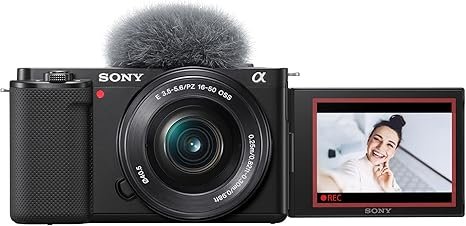
If you want top-tier video without selling a kidney, the ZV-E10 is your best option. It offers the best video Quality and allows you to Shoot in crisp 4K with amazing detail and Comes with a built-in directional mic which picks up your voice clearly. Moreover the screen is fully flip-out which is perfect for framing yourself. You can just plug in via USB-C and go live without extra equipment.
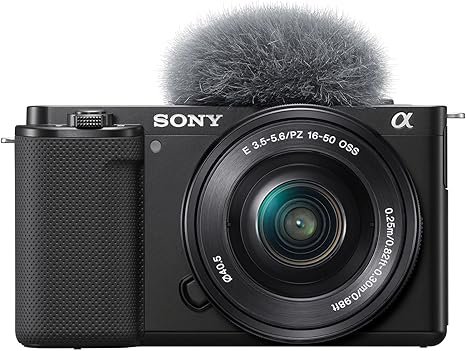
Pros
- Beautiful 4K video with rich colours
- Swivel screen is a lifesaver
- Plug-and-play USB streaming
- Interchangeable lenses (great for upgrades later)
Cons
- No built-in stabiliser (can be shaky if handheld)
- Battery dies fast during long streams
Why it is Best for Podcasting?
This one just works. You will look sharp right out of the box, and it connects to your computer like a webcam. If you are doing talking-head podcasts or interviews, this will make you look next-level without making things hard.
2. Logitech StreamCam (Best Budget Camera)
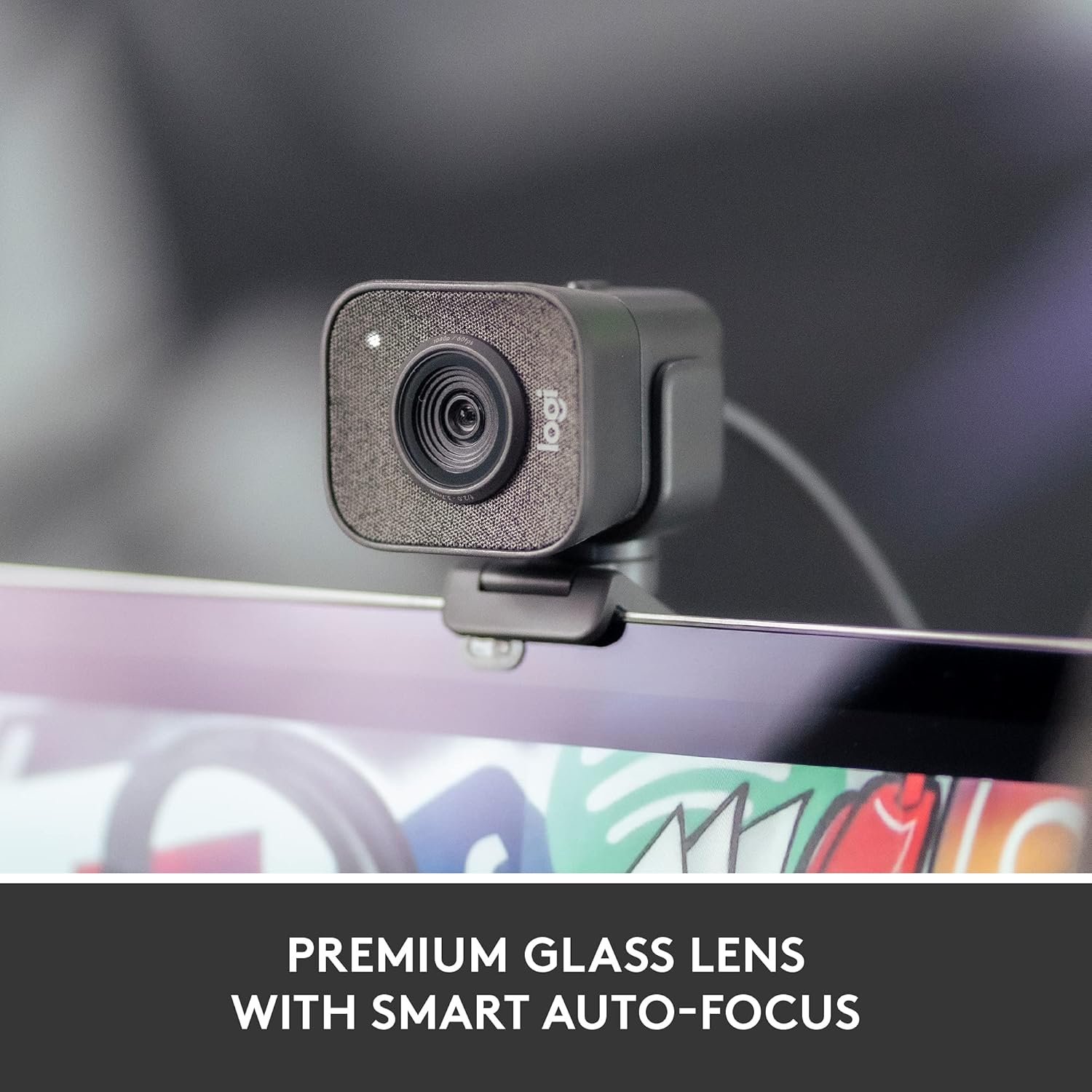
Yes it is a webcam but a really good one. It offers a good Video Quality which Shoots full HD (1080p) at 60fps and is super smooth. It comes with dual mics built in that may not be pro-level, but better than most. This camera plays nice with OBS, Zoom, Streamlabs, and more. There is no setup stress, just plug it in, you are live.
Pros
- Affordable, under $200
- No fuss just plug and go
- Great for laptops and desktops
- Super clear video if lighting’s good
Cons
- No 4K
- Needs decent lighting to look crisp
Why It Is Good?
If you are new to podcasting, this is perfect. It is a webcam, sure but not the junky kind. You will get solid quality with zero setup headaches. Ideal for solo creators, interviews, or streaming straight from your desk.
3. Canon EOS M50 Mark II (Best for Beginners)
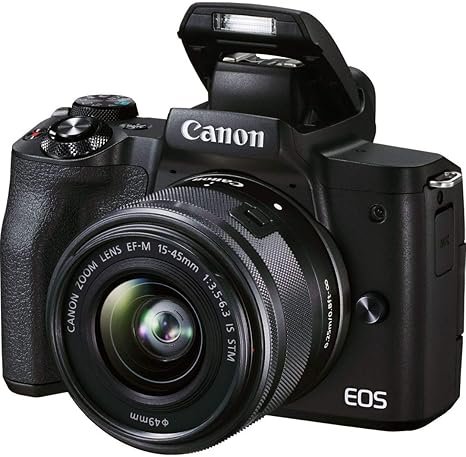
This podcasting camera is a YouTube favourite for many good reasons. It offers a full HD and 4K video quality with a slight crop. It is fast, smart autofocus which stays locked on your face. Furthermore its flip-out LCD makes framing super easy and it has a mic input so you can plug in better sound.
Pros
- Clean HDMI out for streaming
- Touchscreen flip display
- Beginner-friendly menu and layout
- Good in most lighting situations
Cons
- 4K video is cropped (you will look a bit zoomed in)
- Not great in dark rooms
Why It Is Good?
If you are just getting into video podcasting, this one feels friendly. It helps you look good even if you are clueless about cameras. No need to mess with settings. Just flip the screen, hit record, and go.
4. Sony FX30 (Best for Multi-Cam Setup)

If you have a team, crew, or studio, this one is your option because it is made for the big leagues. It offers pure cinema-grade 4K video quality and works with XLR mics, pro monitors, and more. It comes with dual card slots to record longer or back things up. Moreover it shoots in 10-bit, so you can colour grade like the professionals.
Pros
- Incredibly sharp video
- Amazing low-light performance
- Designed for long shoots and studio setups
- Handles multiple angles and cameras well
Cons
- Pricey and is not for casual hobbyists
- Bit of a learning curve
Why It Is Good?
This camera means business. If you are running a podcast studio, filming from multiple angles, or recording for YouTube with professional gear this is your workhorse. Expect cinema-level results, especially paired with solid lighting and sound.
5. Insta360 Link – Best for Solo Creators
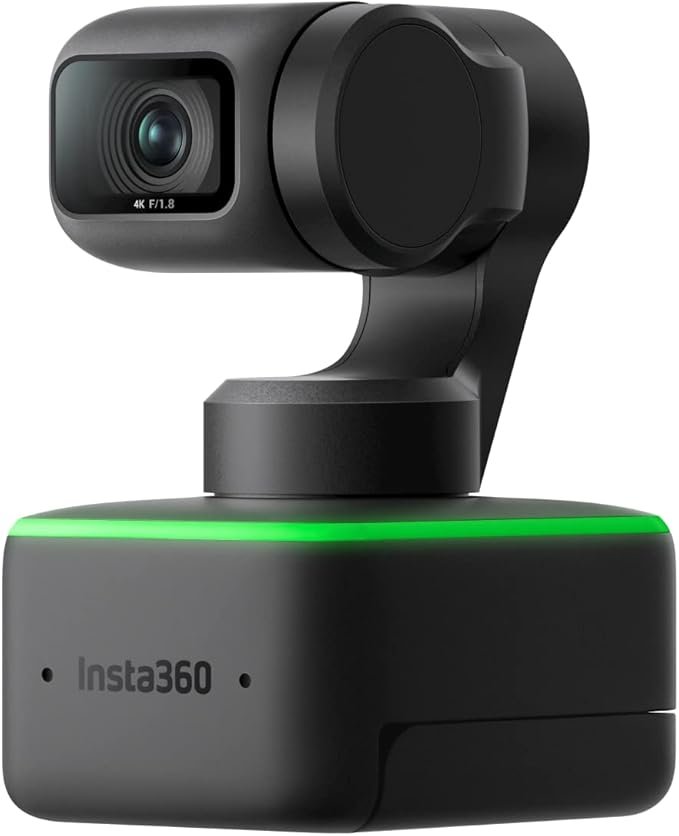
It is a webcam with a robotic twist. Literally. The best thing is that AI tracks your face and moves with you. It provides 4K video, even if you are walking around. You do not need to set up anything, it just works out of the box. It comes with a Built-in mic that is solid for solo shows
Pros
- AI face tracking
- Auto-framing keeps you centred
- Crystal-clear 4K video
- Super compact and simple
Cons
- Can not change lenses
- Sensor’s still webcam-style not DSLR-level
Why it is Good for Solo Podcaster?
This is made for people who move around when they talk. The AI follows your face, zooms, and frames you without touching anything. Great for teachers, solo podcasts, or creators who wave their hands a lot.
Buyer’s Guide For Picking the Right Podcast Camera
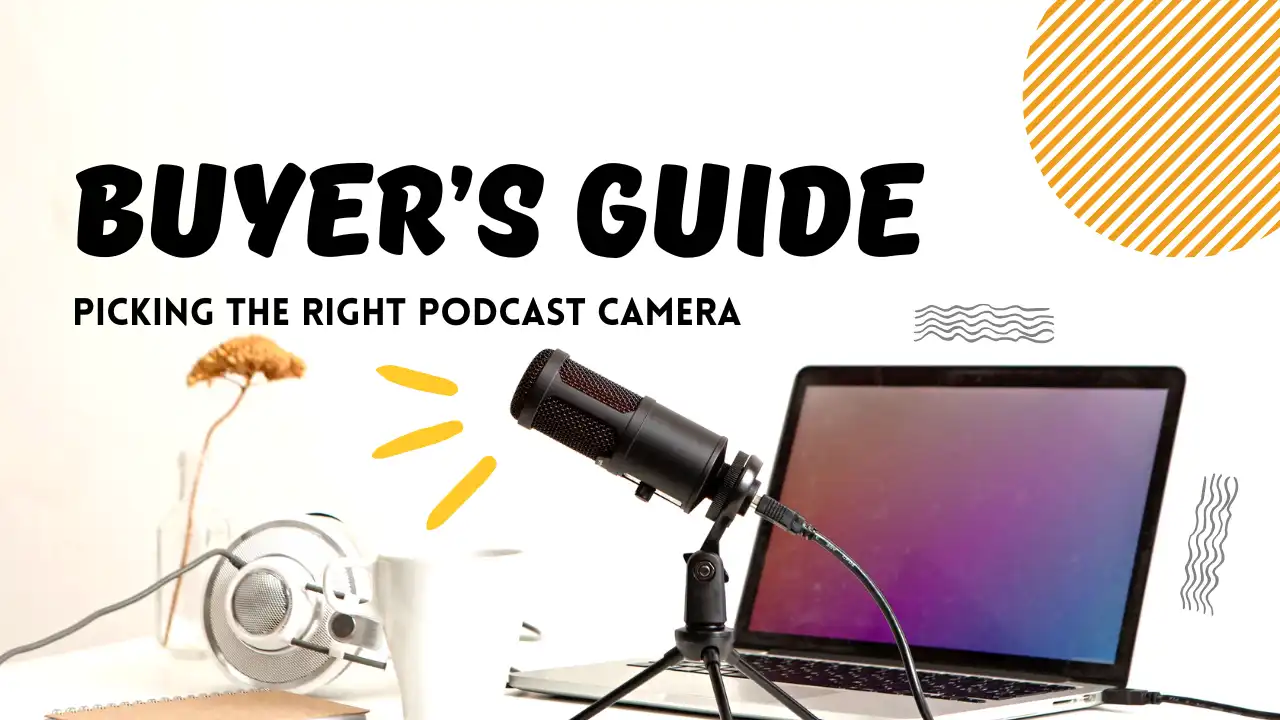
Alright, so you are serious about video podcasting now. That is great but do not just grab the first camera you see. Picking the right one is highly essential and depends on your setup, not someone else’s.
Whether you are running a solo podcast, interviewing guests, or managing a whole studio setup, this part breaks down what really matters.
Here is what you should look for when choosing the best podcast camera for yourself:
i. Video Quality: 1080p vs 4K
This is the first thing people notice about how sharp and clean your video looks.
- 1080p (Full HD): This is solid for most people. Clean, crisp, and great if you are on a budget.
- 4K: If you want pro-level quality, this is the way to go. You get more detail, sharper colors, and it is just as eye-catching on large screens.
There is one small caveat. In the event that you have slow internet or your viewers mostly use smartphones, 1080p quality might be sufficient.
However, if you want to future-proof your setup, Go 4K. Just make sure your computer and editing tools can handle it.
ii. Autofocus & Low-Light Performance
Imagine recording a whole episode and your face goes blurry halfway through. That is where autofocus saves the day.
Cameras with good characteristics are capable of recognizing and focusing on your face so you are always in focus, even if some movement is done. This is very useful for individual performers or speakers who use very expressive hand gestures during their show.
Now, about low-light performance, if your space is not well-lit (or you like dim vibes), your camera better knows how to handle the dark.
Some cameras struggle here, making your video grainy or dull. Others shine, even in moody lighting. The Sony FX30 is a beast in low light, for example.
Add a ring light or softbox light if your room is a bit gloomy. It makes a big difference without breaking the bank.
iii. Mic Input & Audio Sync
Look, we know this is about cameras, but sound still matters a lot. Some cameras have decent built-in mics. But for podcasting you will almost always want an external mic. So make sure your camera has a mic input (3.5mm jack or XLR).
And then there is audio sync. If your lips do not match the words, even by half a second it is annoying. Especially for video podcasts.
Good cameras (like the Canon M50 Mark II) handle sync well. Cheaper ones can also do that but not always. If your camera does not have clean HDMI or USB output, syncing can be a pain later.
Use software like OBS or Riverside.fm if you are streaming, they usually help keep everything in sync.
iv. Streaming Capabilities
Want to go live on YouTube, Twitch, or Facebook? Not all cameras make that easy.
What you are looking for is plug-and-play streaming cameras that connect to your computer like a webcam. USB-C is perfect for this.
The Sony ZV-E10 is awesome here. So is the Logitech StreamCam super simple, no extra gear needed.
Some fancier DSLRs or mirrorless cameras need capture cards (like the Elgato Cam Link) to connect for streaming. Not a deal-breaker, but it adds to the cost and setup time.
If you want zero fuss, get a webcam-style cam that supports USB streaming out of the box.
v. Battery Life & Portability
You do not want your camera dying mid-episode. That is a nightmare.
- Some cameras, like the ZV-E10, drain fast during long recordings unless you plug them into power.
- Others, like the Sony FX30, are built for long hauls and pro setups.
If you are filming on the go or in different locations, consider weight and portability too. A big DSLR can be a pain to carry around. A compact webcam or mirrorless cam is way easier.
Look for cameras that support dummy batteries or USB power delivery for longer sessions.
Single vs Multi-Person Setup
Your podcast layout matters. Let’s break it down:
A. Solo Creators
You can get by with one solid camera. Flip screens, face tracking, and autofocus are your best friends. Look at the Insta360 Link or ZV-E10 easy, sharp, and made for solo vibes.
B. Two-Person Show
You have got options here:
- One wide-angle cam capturing both hosts
- Or two cams, one for each person (looks cleaner in editing)
In case you have preferred to go for a dual-cam setup, then the Canon M50 Mark II or Sony FX30, something of the kind will be the best fit for you. Connecting either of them to the HDMI input on your computer will provide a clear video signal without the camera UI, and hence, it will be the most suitable for syncing with software such as Ecamm or OBS.
C. Group/Studio Setup
Now you are in professional territory. You will want:
- Multiple cameras
- Proper lighting
- Clean audio feeds
- A switcher or software for multi-cam control
The Sony FX30 is built for this. Pair it with external mics, solid lighting, and boom you are studio-ready.
Do not go overboard. Start small. You can always upgrade equipment as your podcast grows.
Podcasting Accessories to Elevate Your Camera Setup
You really do not have to possess superb stuff in order to launch a podcast. However, with several selected accessories, you can see for yourself how your voice becomes clear and your message stays more effectively impressed on the listener.
Imagine getting better angles, improved sound quality, and a recording process without a hitch. The right equipment does not have to be expensive, and they allow you to perform professionally and look and sound like an authority figure in your field no matter if you are a beginner or have been doing it for a while. A p-card podcast can be one of the best podcasts, but only if the marketing strategy is done through surveys and email and has the greatest content.
Accessories Worth Grabbing
Here are a few must-haves (or nice-to-haves) that can take your podcast video game up a notch:
i. Tripods
No one wants shaky video. A good tripod keeps your shot steady and hands-free.
ii. Gimbals
Moving around a lot? Gimbals help smooth out your camera motion and make your shots feel polished.
iii. External Hard Drives
Video files eat up space fast. Backup everything and keep your main device clutter-free.
iv. USB Cables
Long, high-quality ones let you place your camera where you want it, not where your short cord says.
v. Video Editing Software
Clean up your footage, trim the awkward bits, and add some style. Even free tools can do wonders.
vi. External Mics for Cameras
Built-in mics just do not cut it. Plug in a proper mic and you will hear the difference instantly.
Common Mistakes to Avoid When Choosing the Best Camera for Podcasting
Picking the best camera for podcasting? But do not hit “buy now” just yet. A lot of people rush into the wrong gear, then regret it halfway into season one.
Here is how to dodge the common slip-ups and keep your setup smooth, simple, and solid.
1. Buying a Camera Just Because It’s “Popular”
Not every trending camera fits your needs. Just because a YouTuber loves it does not mean it will work for your podcast.
Ask yourself: Am I recording solo? Interviewing guests? Going live every week? Match the camera to your workflow not to someone else’s wishlist.
2. Ignoring Audio Input
Video is great, but the bad sound kills the vibe. Some cameras do not have a mic jack. That is a huge no-no. You want clean and clear audio. Look for cameras with 3.5mm or XLR inputs.
Better yet, use a proper external mic and sync things up with software like OBS.
3. Not Checking for Clean HDMI or USB-C Streaming
Want to go live? Then you need to clean HDMI or USB out. If the camera you are using does not come with this feature, then you will require a capture card and also a longer time for setup.
Decide to opt for the ZV-E10 or Logitech StreamCam plug-and-play models if you want a simpler life.
4. Overpaying for Features You will Never Use
Cinema-grade cameras are cool. But do you really need 10-bit colour grading and dual card slots unless you are running a full-blown studio, probably not.
Focus on stuff that helps: flip screens, face tracking, decent low-light performance, and easy setup.
5. Not Testing Before Launch
Do not wait until episode one to figure things out. Record a test video. Check your lighting, angles, audio sync, and file size.Better to catch problems early than panic when you are already recording.
6. Thinking the Camera Does All the Work
Here is the truth: cameras do not make great podcasts you do. Even the best camera for podcasting would not fix a boring topic or poor sound. The camera just helps tell your story better.
FAQs – Best Camera for Podcasting
1. What is the best camera for podcasting in 2025?
For most people, the Sony ZV-E10 is the sweet spot. It nails video quality, would not break the bank, and it’s super easy to use.
2. Do I need a 4K camera for podcasting?
1080p is absolutely acceptable for most cases. However, if the goal is very clear video or you foresee clipping footage later, then 4K can give a hand.
3. Can I use a DSLR for podcasting?
Yes, go for it. Just make sure it has clean HDMI or USB out, and does not shut off after 30 minutes. Some DSLRs do that and it’s annoying.
4. How many cameras do I actually need?
Just one is enough if you are podcasting solo. But if you want multiple angles or doing interviews, then two or more can really level it up.
5. Are webcams good enough for podcasting?
Definitely. Good ones like the Logitech StreamCam or Insta360 Link look great and cost way less than pro gear.
6. Is lighting more important than the camera?
Honestly, yes sometimes it is. Even a cheap camera looks amazing in good lighting. Bad lighting? Not even a $2,000 camera can save you.
7. What is the difference between mirrorless and DSLR?
Mirrorless cameras are smaller, faster, and more modern. DSLRs are bulkier but still solid. Both work you do not need to stress over it.
8. Can I use my phone instead?
Sure can. Many smartphones shoot great video. Just use a tripod and good lighting.
Final Remarks- Best Camera for Podcasting
Picking the right podcast camera in 2025 is not about chasing trends. It is about what you need. Whether you are filming solo with a webcam or building a full studio setup, the gear should fit your style not the other way around.
The Sony ZV-E10 is a great all-rounder, while the FX30 handles serious studio work. If you are Just getting started, a solid webcam like the Logitech StreamCam is more than enough. But do not forget fancy video helps, but people stay for your voice, your vibe, and your story.
Read More : Essential Podcast Equipment List: Gear You Need to Get Started
Read More : What Makes A Podcaster Different From A Youtuber?

